When is the best time to visit Spain?
The information on this page is based on historical averages and may not reflect current conditions. Please check with local authorities for the latest travel advice.
Read moreThe best time to visit Spain is from March to May and September to October. From March to May, temperatures rise slowly from 12–17°C, while through September and early October they vary between 17–21°C, meaning days at the beach aren’t uncomfortably hot.
Sunshine isn’t the only reason for visiting Spain during these months. In spring, all kinds of festivals and celebrations begin taking place – from Las Fallas in Valencia to Feria de Abril in Seville. In autumn, the Fiestas de Pilar extend over three days in Zaragoza, the regional capital of Aragon, while in the southern region of Andalucia, the Bienal de Flamenco alternates yearly between Seville and Malaga. September also sees Barcelona celebrate La Mercè – its largest street party of the year – and movie fanatics are well taken care of too, thanks to dedicated film festivals in Sitges and San Sebastián.
Elsewhere, nature lovers can observe the cherry blossoms of Valle del Jerte between mid-March and the beginning of May, and the grape harvest of La Rioja in September. Spring is also a popular time for religious events like Romería de la Virgen de la Cabeza near Jaén, and Semana Santa throughout the whole Andalucia region.
More about the best time to visit Spain
Monthly weather and travel tips for Spain
The first month of the year is a quiet one in Spain, so ideal for those who dislike crowds and don’t mind colder weather. Temperatures can creep up to 16°C in the warmest southern regions, and drop below zero in high-altitude areas like the Pyrenees and the Sierra Nevada. However, such chilly weather brings plenty of snow to these mountain ranges, where by January the ski resorts are in full swing. So unless you’re off to The Canaries, you’ll definitely need your warmest winter coat.
There’s also a few festive events going on in January, including Reyes Magos (Three Kings Day) on 6 January – Spain’s version of Christmas Day. The night before involves hundreds of people parading through the streets on large nativity-themed floats, guided by three wise men (often three lucky local council members) who lead an extraordinary sweet-throwing frenzy. January is also a great time to take advantage of cheap flights and slashed prices in the post-Christmas sales, known locally as ‘las rebajas’.
14°C
High
5°C
Low
12 days
Rainfall
Though often the coldest month of the year in Spain, February is not short on reasons to visit – especially if you’re a festivalgoer. Down in the city of Cádiz in Andalucia, the rip-roaringly fun ‘Carnaval’ involves two weeks of fancy-dress processions, drawing thousands of revellers from across the country. The only party with a higher headcount is the Las Palmas de Gran Canaria carnival – held in Las Palmas with a different rainbow-coloured theme each year.
It’s not all loud and flamboyant fiestas, however. Madrid plays host to one of Europe’s biggest celebrations of contemporary art in the Feria Internacional de Arte Contemporánea, while in the western region of Extremadura, birdwatchers gather to celebrate the arrival of many different species in Monfragüe National Park. There’s also a medieval-themed festival in the high-altitude town of Teruel, Aragon – but wrap up warm if you go, as temperatures here can drop lower than anywhere else in Spain at this chilly time of year.
14°C
High
5°C
Low
11 days
Rainfall
With the arrival of spring, things start to warm up with each passing day until suddenly summer doesn’t seem so far away. In central and southern Spain, you can probably get away with wearing just a t-shirt in the afternoon, so long as there’s no wind or clouds. But you’ll want to keep it hidden beneath your jumper if you’re visiting anywhere north of Madrid – and rainfall can be heavy and unpredictable all over Spain, so be sure to pack a raincoat.
March is also when two of Spain’s best-known cultural events take place. Down in Andalucia, The Festival de Jerez will already be underway in Jerez, showcasing the nation’s most talented flamenco performers in the birthplace and heartland of Spain’s most famous musical genre. But the main event has to be Valencia’s Las Fallas – an astounding festival of relentless drinking and dancing, phenomenal (and very loud) firework displays, live music and satirical humour. It all culminates in a mass ritual burning of giant papier-mache effigies (known locally as ‘ninots’) in the streets – a spectacle you won’t want to miss.
17°C
High
8°C
Low
12 days
Rainfall
In April, spring is in full swing – and on certain coastlines you can steal a few hours of sunbathing on the beach. With wildflowers in full bloom, it’s also a great time of year for exploring parks and more rural areas like the Valle del Jerte in northern Extremadura. But be aware that the heavens can open at any moment, so it’s certainly worth packing a raincoat.
Many people venture out to watch the candlelit Semana Santa parades taking place in cities across Andalucia and Castille-Leon. Dressed in different-coloured hooded robes, the ‘brotherhoods’ leading the parades each carry two statue-mounted floats from their church to the city’s cathedral and back again. Later in the month, Seville’s Feria de Abril sees locals don their best flamenco dresses, ride on horseback and dance late into the night. Elsewhere, foodies are drawn to festivals like Mercat de Ram in the Catalan town of Vic, and the Feria del Queso (more cheese than you’ve ever seen before) in the town of Trujillo, Extremadura.
19°C
High
10°C
Low
11 days
Rainfall
By May, the Spanish countryside is blanketed in bright wildflowers and daytime temperatures begin to rise and stay above the 20°C mark. In coastal regions like Andalucia and Catalonia, that means the start of beach season – a great time to enjoy some sea and sand before the busier summer months, whereas inland destinations like Granada and Seville make for warm and sunny spring breaks.
Party season is also well underway in May. Take Madrid’s Fiesta de San Isidro, for example – a week of near non-stop processions, bullfights and live music honouring the Spanish capital’s patron saint. Besides that, you’ve got the Fiesta de los Patios de Córdoba (a rare chance to see Córdoba’s flower-strewn courtyards opened up), WOMAD music festival in Cáceres, and the legendary opening parties on the island of Ibiza – Spain’s undisputed clubbing capital. So pack your camera, along with clothes suited to warm and wet weather.
23°C
High
13°C
Low
11 days
Rainfall
A glorious time to be in Spain, pretty much wherever you are. Temperatures across the central and southern regions will be hotting up, while the great green north will be much warmer and primed for outdoor activities like hiking and mountain biking. Leading from the French Pyrenees to Spain’s west coast, the Camino de Santiago walking trail is well-known and becomes crowded in June. However, there are many other trails starting at various points around Spain, which take walkers through a range of stunning landscapes on their way to the finish line in Santiago de Compostela.
June is also a great time to visit Spain because of all the different festivals going on. Corpus Christi celebrations take place in Toledo and many other towns, while Barcelona hosts two of the biggest rock, pop and dance music festivals of the year with Sonar and Primavera Sound. This all comes before a spectacular finale on 23 June, Noche de San Juan, when seaside towns across Spain are lit up with beach bonfires and fantastic firework displays.
27°C
High
16°C
Low
9 days
Rainfall
There’s no denying that July is the busiest month for most destinations in Spain, to which there are upsides and downsides, depending on how you look at it. Going out at night, for instance, you’ll have a wide choice of lively bars and restaurants. But you might struggle to find an authentic Spanish atmosphere in the more tourist-friendly resorts of the Costa del Sol or Costa Blanca.
Needless to say, temperatures have reached sizzling highs by July – so you’ll need to pack plenty of sunscreen. It can be easy to forget the intensity of the heat when enjoying yourself at festivals like Festival Internacional de Benicàssim, near Valencia, or the Festival de la Guitarra de Córdoba – a celebration of guitar music, from flamenco to rock, blues and beyond. And that’s not all. Pamplona’s world-famous San Fermín (running of the bulls) takes place over a week, while the Día de Santiago (Feast of St James) is celebrated spectacularly in Santiago de Compostela on 25 July.
30°C
High
19°C
Low
6 days
Rainfall
In August, Spain’s beach resorts become jam-packed with as many locals as tourists – all determined to escape the searing heat (often +35°C) of inland cities like Seville, Córdoba and Madrid. Even coastal destinations like Barcelona, Málaga and Valencia can be too hot and humid to enjoy, which is why many take the chance to explore Spain’s cooler northwestern Atlantic coast. Here, temperatures range from the low twenties up to the low thirties, and the sea breeze tempers the heat on exceptionally hot days.
And if the cooler weather isn’t tempting enough for you, then maybe the food will. The region of Galicia is renowned for its seafood, not least octopus, which features heavily on any tapas menu and even has its own dedicated festival, the Festa do Pulpo – held on the second Sunday of August in the small town of Carballiño. Down the road in Cambados, the five-day Festa do Albariño celebrates Galicia's favourite fruity white wine, while the Fiesta de la Sidra Natural takes place in the neighbouring and cider-loving region of Asturias during the fourth week of the month.
All that being said, you could choose to cool off in a very different way by joining in the tomato-throwing antics of La Tomatina, held every August in the Valencian town of Buñol.
30°C
High
19°C
Low
6 days
Rainfall
September brings welcome respite from the sizzling summer temperatures, meaning places like Madrid and Seville are no longer too hot to handle. The coolest days in the northern regions tend to hover around the 17°C mark, whereas the hottest days along the south coast can still reach above 30°C – so sunscreen is still an essential item to bring along.
This transitioning period is a great time to explore just about anywhere in Spain, and there are plenty of festivals going on too. One not to miss is the Fiesta de San Mateo, held in the wine-making region of La Rioja during the third week of September in honour of the grape harvest. The regional capital, Logroño, is awash with festivities – including the chance to crush grapes with your feet – and (of course) plenty of world-class wine. Other events that may tempt you include San Sebastián’s two-week-long film festival, Barcelona’s epic Festes de la Mercè, and the Bienal de Flamenco – the most prestigious of flamenco festivals held alternately in Seville and Málaga.
26°C
High
17°C
Low
8 days
Rainfall
Though summer may still seem a not-too-distant memory, it’s not long before the winter chill starts to bite during October. The telltale signs are numerous, from thick coats and long leather boots to the yellowy-orange leaves cloaking the city squares. Towards the end of the month, temperatures average around the mid-teens in most parts of Spain, although you could probably sneak a late beach holiday in Mallorca or one of the other Balearic Islands, where things are around ten degrees warmer.
However, the best way to experience autumn in Spain is to embrace the changing temperatures, whether that’s ambling through the glorious Andalucian countryside or surfing in the high-rolling waters off the Atlantic coast (in which case, you’d better bring a wetsuit). To get off the beaten track, you could head to the Navarre region’s vibrant Irati Forest on the northeastern border with France, or keep the party going at Zaragoza’s Fiestas del Pilar. Spain’s National Day also occurs on 12 October, and is celebrated all over the country.
23°C
High
14°C
Low
11 days
Rainfall
With winter on the horizon, temperatures across Spain are cool and crisp during November – so it’s an ideal time to visit for those who like to avoid the heat. The deep autumn colours and bright blue skies create an entirely new natural environment that’s a joy to explore, especially in the rural areas of Andalucia. However, bear in mind that high-altitude areas in the north will be much colder and can even see snowfall towards the end of the month.
After a chock-full summer calendar of festivals and fiestas, November is when things generally start to quieten down. That being said, the first day of the month is All Saints’ Day – a national holiday for remembering the dead and enjoying seasonal food. A few days later, sherry lovers celebrate their favourite tipple in Jerez for International Sherry Week, while the locals of Potes – a small village near Santander – honour their traditional drink at the Festival de Orujo. You can also attend international jazz festivals in Granada and Madrid, where scheduled events last the entire month.
18°C
High
10°C
Low
11 days
Rainfall
December’s chilly temperatures are redeemed by an array of Christmas markets up and down the country, from Bilbao and Barcelona to Madrid and Seville. They are treasure troves of traditional crafts, nativity scenes and artisanal products like turrón and manchego cheese. Christmas Day itself is celebrated as a national holiday, though the major celebrations are reserved for January. New Year’s Eve is a much bigger party, with Spaniards attempting to eat 12 grapes (one for every chime) when the clock strikes midnight.
On a regional level, there are fewer events than in other months – but Málaga’s spectacular Christmas lights have become something of an attraction, especially on the night they are turned on along Calle Larios. Just down the road, the town of Torrox draws thousands for its annual Migas Festival – a celebration of ‘migas’, the region’s most typical dish. And for those who’d rather spend winter on a beach, look no further than the subtropical Canary Islands, where temperatures remain comfortably between 17–23°C throughout the entire month.
15°C
High
6°C
Low
12 days
Rainfall
Weather and temperature in Spain
Think ‘Spain’ and a scene of bright blue skies, white-sand beaches and radiant sunshine most probably springs to mind. That would be an accurate representation of the country in many areas, but Spain can in fact be broken down into five climatic regions. Firstly, there’s the cool and humid climate of the Atlantic coast, home to cities like Santander and San Sebastián. Then you’ve got the vast dry areas of central Spain, including Madrid, Valladolid and Zaragoza. Meanwhile, Mediterranean destinations like Barcelona, Valencia and Alicante are mild and sunny in spring and autumn, while the mountainous landscapes of the Pyrenees and the Sierras can get very cold. Finally, southern Andalusian cities like Malaga and Almeria are much warmer at these times of year – not to mention The Canary Islands, which are closer to Africa than mainland Spain and so experience tropical temperatures even in winter.
| Jan | Feb | Mar | Apr | May | Jun | Jul | Aug | Sept | Oct | Nov | Dec | ||
|---|---|---|---|---|---|---|---|---|---|---|---|---|---|
| Madrid | High | 11°C | 11°C | 16°C | 18°C | 24°C | 30°C | 34°C | 33°C | 27°C | 21°C | 15°C | 12°C |
| Low | 1°C | 1°C | 4°C | 8°C | 10°C | 15°C | 19°C | 19°C | 15°C | 11°C | 6°C | 1°C | |
| Rainfall | 12 days | 11 days | 12 days | 12 days | 12 days | 9 days | 6 days | 6 days | 9 days | 12 days | 12 days | 13 days | |
| Barcelona | High | 14°C | 13°C | 17°C | 19°C | 22°C | 26°C | 29°C | 29°C | 26°C | 23°C | 18°C | 14°C |
| Low | 5°C | 4°C | 8°C | 11°C | 14°C | 18°C | 21°C | 21°C | 18°C | 15°C | 10°C | 6°C | |
| Rainfall | 12 days | 11 days | 12 days | 12 days | 12 days | 9 days | 6 days | 6 days | 9 days | 12 days | 12 days | 13 days | |
| Seville | High | 16°C | 16°C | 20°C | 22°C | 28°C | 31°C | 34°C | 34°C | 29°C | 26°C | 20°C | 17°C |
| Low | 6°C | 5°C | 9°C | 12°C | 15°C | 18°C | 20°C | 20°C | 18°C | 16°C | 10°C | 7°C | |
| Rainfall | 12 days | 11 days | 12 days | 12 days | 12 days | 9 days | 6 days | 6 days | 9 days | 12 days | 12 days | 13 days | |
| Málaga | High | 16°C | 16°C | 18°C | 21°C | 24°C | 28°C | 31°C | 31°C | 28°C | 24°C | 19°C | 17°C |
| Low | 7°C | 7°C | 9°C | 12°C | 14°C | 18°C | 20°C | 22°C | 19°C | 16°C | 11°C | 8°C | |
| Rainfall | 12 days | 11 days | 12 days | 12 days | 12 days | 9 days | 6 days | 6 days | 9 days | 12 days | 12 days | 13 days | |
| Valencia | High | 17°C | 16°C | 19°C | 21°C | 25°C | 28°C | 30°C | 30°C | 28°C | 25°C | 20°C | 17°C |
| Low | 6°C | 6°C | 9°C | 12°C | 15°C | 19°C | 22°C | 23°C | 19°C | 16°C | 11°C | 6°C | |
| Rainfall | 12 days | 11 days | 12 days | 12 days | 12 days | 9 days | 6 days | 6 days | 9 days | 12 days | 12 days | 13 days | |
| Granada | High | 14°C | 13°C | 18°C | 21°C | 26°C | 30°C | 34°C | 34°C | 29°C | 24°C | 18°C | 15°C |
| Low | 2°C | 2°C | 6°C | 9°C | 12°C | 15°C | 18°C | 19°C | 15°C | 12°C | 7°C | 3°C | |
| Rainfall | 12 days | 11 days | 12 days | 12 days | 12 days | 9 days | 6 days | 6 days | 9 days | 12 days | 12 days | 13 days |
Weather data provided by Forecast.io
Cost of stay in Spain
Want to travel smart? Here, you can check out the average cost of accommodation per night in Spain.
-
0
49
98
147
196
- £101 Jan
- £114 Feb
- £118 Mar
- £125 Apr
- £124 May
- £135 Jun
- £147 Jul
- £150 Aug
- £133 Sept
- £128 Oct
- £112 Nov
- £122 Dec
-
0
49
98
147
196
- £77 Jan
- £88 Feb
- £96 Mar
- £98 Apr
- £96 May
- £103 Jun
- £123 Jul
- £129 Aug
- £97 Sept
- £95 Oct
- £83 Nov
- £99 Dec
-
0
49
98
147
196
- £26 Jan
- £30 Feb
- £33 Mar
- £36 Apr
- £35 May
- £39 Jun
- £41 Jul
- £40 Aug
- £35 Sept
- £35 Oct
- £30 Nov
- £35 Dec
-
0
49
98
147
196
- £93 Jan
- £105 Feb
- £116 Mar
- £113 Apr
- £122 May
- £140 Jun
- £163 Jul
- £166 Aug
- £128 Sept
- £117 Oct
- £101 Nov
- £128 Dec
-
0
49
98
147
196
- £59 Jan
- £67 Feb
- £73 Mar
- £75 Apr
- £78 May
- £82 Jun
- £88 Jul
- £90 Aug
- £80 Sept
- £77 Oct
- £65 Nov
- £70 Dec
The best places to visit in Spain
Check out some of the most popular cities, places to visit and things to do in Spain!

Madrid
Popular in July
City Walks, Museums, Culture

Barcelona
Popular in July
Architecture, City Walks, Sightseeing

Seville
Popular in May
Old Town, City Walks, Tapas

Málaga
Popular in August
Old Town, City Walks, Sunny

Valencia
Popular in August
Old Town, City Walks, Architecture

Granada
Popular in October
Old Town, History, Tapas
Ready to book a trip to Spain?
Enter your dates to find the perfect place to stay in Spain!
What other travellers say about their holiday in Spain
-
Not touristy, felt like it was full of more locals, which we liked. Everyone very friendly.
Andy Málaga January 2024 -
I love the promenade on playa Blanca. So enjoyable to do long walks. Excellent restaurants and cafés in the rubicon marina. Also a great selection of restaurants along the promenade. My favourite place in lanzarote and I continue to return.
Jane Playa Blanca January 2024 -
Great atmosphere, we were there at Crhistmas time, some bars, restaurants and shops closed. A lot of families, cool and chill people, caravans, dogs, people doing kite surfing and other water sports. Good bars and restaurants.
Sonia Tarifa January 2024 -
Have been here previously, a few years ago, but only for a day each time. First chance to walk the city properly. Much enjoyed, especially the bars serving 'tapas' meals. Being over the New Year many places (museums and restaurants) were closed which was a pity - but this justifies another visit as soon a possible! The places we did manage to visit were all interesting, and very reasonably priced - the only expensive place was the car parking, which is confusing to a visitor.
Norman Cádiz January 2024 -
It is a beautiful city and is my favourite Spanish city, I live in Spain and travel to many towns and cities but Valencia is our favourite, it takes every box including beaches, parks, beautiful buildings and pleasant and helpful people, food very good too.
Margaret Valencia January 2024
-
Really fascinating city I really recommend it, especially near to beaches
Safarboyev Barcelona February 2024 -
Nice old buildings and cobbled streets, only a small place we stop off on journey too and from ferry port..
Jacqueline Lerma February 2024 -
Excellent base to tour Andalucía. there are some great museums such as the Museum of Malaga, that has a great Archaeology section.
Mark Málaga February 2024 -
Lovely place to stay with a lovely beach. You can also go hiking up the mountains. There are restaurants and amenities nearby.
Vicky El Médano February 2024 -
Tapas in Casa Lola, Teatro Flamenco, Vermut & the train to Fuengirola were all highlights. Malaga is very walkable. The city bus tour is okay but probably not great value for money.
Málaga February 2024 -
The place has a pleasant old part with a wonderful cathedral and lovely small tapas bars/restaurants.
Annemarie Jaén February 2024
-
Lovely Islamic-era palace, though probably not as impressive as those further south, which I've yet to visit. Interesting Roman ruins. Views of old Zaragotha are great if you cross the bridge to the more modern half of the city. Not too touristy; some good and reasonably-priced cafes and restaurants and mouth-watering food market. Running out of things to do after than 2-3 days - though it's not a bad place to sit in a square and read.
Alexandra Zaragoza March 2024 -
A beautiful place well worth the visit. People were very friendly and there is a lot of amazing places to see. I enjoyed myself walking around and experiencing everything the city had to offer. I will return in the future
Cádiz March 2024 -
It is small village at the head of a valley.It is very quiet in the winter months though I think it could be busy in the summer especially weekends. The are three bars in the village that I noticed . I did not go because facilities at the hotel were more than adequate. There is a small shop near the Church There is a superb restaurant going further up the valley about three or four km at the col you cannot miss it there is no other road
Stephen Benimaurell March 2024 -
Perfect place to stay overnight when walking the Camino
lizzie Santillana del Mar March 2024 -
Charming town. Centre of town shops, bars and restaurants. Villa was lovely- easy walk to town and small food shops. Small supermarket also easy walking distance. Any questions we had dealt with quickly. Lovely villa and holiday
Pollença March 2024 -
Morro Jable is a charming old fishing town where closer to the port, more locals live, while on the other side, along the white sandy beach, there are hotels, restaurants, and souvenir shops. Morro Jable itself is a cool place; you can really feel a great vibe here. The beach bars are always full, yet the town itself has secluded streets where locals move about, enjoying cortados in small cafes.
Bolesław Morro del Jable March 2024
-
Lovely and wild part of Tenerife. Vineyards and local eateries are nearby and many walks /trails to explore. A car is required as there’s not much public transport.
Marc Puerto de la Madera April 2024 -
Valencia is charming, it has a nice relaxed feel about it. The indoor market is a must, Cathedral is lovely and the Science park and Oceanografic is a must also. Beaches are a short distance with lots of restaurants. I would say it has everything you could wish for in a holiday
Valencia April 2024 -
Great museums churches palaces. Base for excusions to Avila Segovia Toledo Salamanca El escorial.
Madrid April 2024 -
Busy city - beautiful beach - market every evening on the promenade- lots of restaurants- bakeries all Look exceptional- also many tapas restaurants- Plaza Commercial worth a visit if shopping is your thing
Catherine Alicante April 2024 -
Great beach with plenty of bars and restaurants. Such lovely food and friendly people. A perfect place to stay with the locals and feel like your part of the Gran Canarian community!
Las Palmas de Gran Canaria April 2024 -
A beautiful city with lots to see & do. Nice restaurants & bars.
Marjorie Seville April 2024
-
Amazing city mixing religious and cultural features.
Mark Burgos May 2023 -
Love the place highly recommend a trip here for a few days good beach and lots of restaurants nearby cheap bus ride away from old town at top of the hill and bus stop across the Rd
Mojácar May 2023 -
I loved everything of Barcelona: art, walks, city, food, ambience Everything. I recommend La Sagrada Familia (take the guide tours with fast access) and to buy the Metro’s card (2 or 3 days) with unlimited travels;)
Hernandez Barcelona May 2023 -
Great location with beach and beautiful sea on doorstep. Staff were friendly and happy to help. Very clean and modern with plenty of facilities. It was relaxing and offered more than expected. Breakfast was fantastic and catered to everyone. Although some of the dinners on offer were not always to our palates.
Duncan Portinatx May 2023 -
Very clean city with very tourist centered focus giving the visitor a very pleasant experience, i would highly recommend a visit as I was very much surprised by my first visit to this wonderful city, i will be returning to the city of baloney's.
Donal Málaga May 2023 -
I loved the elegant tree lined streets and the fabulous architecture. The Sagrada Familia was particularly impressive and an uplifting experience. The view of the City from outside the National Art Gallery of Catalonia is superb. I also recommend visiting Parc Guell and the Pedrera, they are wonderful. I did not want to go home and I shall definitely visit Barcelona again.
Angela Barcelona May 2023
-
Picasso museum, Cathedral, Park, Port. Favorite restaurant: Taberna Casa Lola Calle Granada 46 Best ice cream: Casa Mira, Calle Larios 5
Irena Málaga June 2023 -
A lovely small resort. Easy to get around and it had a very friendly atmosphere. Everyone we met were really nice.
Es Cana June 2023 -
A week was plenty of time nice relaxed resort. Plenty of nice restaurants and very family friendly. Gorgeous beach front and picture perfect back streets. Great beaches with facilities. We stayed down my the port and we liked the laid back atmosphere there and again fab restaurants I would recommend Mumbai Masala & Rosettii.
Niamh Estepona June 2023 -
Nice place to stay. Lovely beach, plenty of tat shops. Plenty of places to eat and drink. Lots of supermarket’s. Clean place.
David Playa del Ingles June 2023 -
Definitely a young person's city. Vibrant and alive, especially when a festival is happening. Lots to see and do, with the history.
Alicante June 2023 -
The Marina area of Denia is much improved with lots of fantastic local individual restaurants all through the back streets offering fresh fish, fabulous meats, pizzas and salads!
Kay Denia June 2023
-
15th time I have visited Barcalona. Says it all. Twice playing hockey. Many times with friends. Many times with family. Brilliant place.
Barcelona July 2023 -
It's pleasant friendly place .Close to airport. On train line. Good walking along the coast . Good transport links to nearby towns and beyond. Good local bars and restaraunts
Benalmádena July 2023 -
Beach absolutely great. Water perfect. View exquisite. Restaurants and bars busy but fairly priced
Paul Tamariu July 2023 -
Great place to base yourself for exploring the Picos.
Jane Arenas de Cabrales July 2023 -
A beautiful place and views are breathtaking. Quite hilly so wouldn’t recommended for anyone who has trouble walking far
Nerja July 2023
-
Lovely city, very good for walking. Great park all along the city.
Hendriena León August 2023 -
Great resort town which caters well for visitors. Beaches kept very clean and great to have fabulous toilet and changing facilities. Good museums and restaurants and cafes.
julie San Sebastián August 2023 -
We loved Adeje. The beaches were lovely - fine golden sand and even in August not crowded. Lots of shops and restaurants. Lovely promenade walks all the way around the coast. The marina enabled us to go parascending and jet skiing. Adeje is very hilly and there are lots of steps to negotiate.
Carolynn Adeje August 2023 -
It’s a nice clean beach, good restaurants and bars, just a little crowded maybe
Natalia Playa de Palma August 2023 -
Great place with lots of bars and restaurants, good atmosphere and people really friendly. Lovely beaches if you get the weather
San Sebastián August 2023 -
The only thing I didn't like is being August and the unpleasant stink coming out of any single drain, which is normal i understand. But I've been here in June /July and there's no smell of drains. Next time i will visit in June/July again. Everything else is just perfect.
Barcelona August 2023
-
mojacar is a fabulous resort , great eating places , Mojacar village is fabulous . beautiful beaches , very clean area.
Sandra Mojácar September 2023 -
The hotel is just a great little hotel with a great restaurant and winery
La Vid y Barrios September 2023 -
A perfect calm village near Mahon and many beautiful calas. You have amazing calas like Binidali and Blanc 5-10 mins away, and towns like Mahon and Binibecca are just 15 mins away.
Es Canutells September 2023 -
I’ve never been to this part of Majorca. It is perfect for walkers and cyclists. A few select but lovely restaurants - most need pre booking. There is a great bus service one hour direct from Palma.
joanne Banyalbufar September 2023 -
Nice village with friendly people. Good base for exploring locally. Restaurante Redondo’S - Excellent value; good food and friendly staff Bar Los Ventanales - friendly staff
Julie Almáchar September 2023 -
Não conhecia Islantilla, foi uma agradável surpresa
Pedro Islantilla September 2023
-
Fantastic . Loved the old part . Great food , loads to see . Postiguet beach was amazing xx
ann Alicante October 2023 -
As we travelled out of the summer season it seemed quiet but felt safe and seems family friendly. It is very much a traditional feel of Spain, doesn't feel like a tourist den which is nice. English is not widely spoken but that just adds to the authentic Spanish experience. Learning a few key basic words in Spanish would be a good idea, such as greetings etc.
Roquetas de Mar October 2023 -
Vibrant, cool, stylish. Only spent one day/night here but a easy place to get to know and to enjoy. (I went to old town and beach). Easy boat trip to Morocco...
Tarifa October 2023 -
Delayed flight meant I didn't see the place before moving on. Seemed nice. Relaxed vibe.
Estepona October 2023 -
nice long sandy and touristy beach! You got warm water, sun beds, decent cocktails and a "sports" reserved area - all great!
Cristian Playa del Ingles October 2023 -
Old and new juxtaposed. A hidden treasure steeped in European history well worth a visit
simon Xàtiva October 2023
-
Lovely place. Great food. Nice souvenirs. Just love it.
Susana Combarro November 2023 -
sunshine holiday, nice wild beaches, clear clean watersw and beautiful scenery. nightlife for all ages, good shopping and very good restaurants but very expensive.
San Antonio November 2023 -
The view was beautiful and the apartment was very well laid out and beautifully decorated We look forward to going back again next year
susan Arona November 2023 -
Bustling , typically Spanish town with lots of Roman ruins, museums, and oodles of restaurants, cafes and bars. Plenty opportunities for retail therapy, if that's what you like.
Kenneth Cartagena November 2023 -
Very clean and beautiful.. locals very friendly. Amazing food.
John paul Corralejo November 2023 -
It’s a lovely town with lots of facilities. Easy to get to beach on foot with brilliant public transport links. Most facilities like water park are closed in winter months but there are loads of artisan markets and things to do.
Lisa Corralejo November 2023
-
Great place and not too busy, easy access to places
colin La Cala de Mijas December 2023 -
The city has everything you need for a visit. There are lots of great shops, museums, restaurants and buildings to visit as Las Palmas has over 500 years of history. There are also some lovely beaches in the city. The best of which is Las Canteras, voted one of the best urban beaches in the world. Climate is also hot in summer and warm in winter. All in all, much better than the weather would be at the same time in the UK!
ANTHONY Las Palmas de Gran Canaria December 2023 -
First time staying in Santander - good night life. Found a lovely little dog friendly bar. Wish we could have stayed longer
Jackie Santander December 2023 -
Loved this town- perfect for us….NoT a tourist resort- very few visitors… but plenty of restaurants/ local shops. Fantastic beach- with showers/loos but no beach lounger hire. Excellent base for exploring the island.
Lorraine Gran Tarajal December 2023 -
Think parts of it are losing its Spanish feel. Haven't been here for twenty years and seems to have become very Brit (English pubs etc) and noisy with it.
Ian Caleta De Fuste December 2023 -
Brilliant city: little known as a short-trip/weekend getaway. Most city centre landmarks/shops/cafes/restaurants are within easy walking distance. The visit to the castle was wonderful: great views of the city and surrounding area/coastline. Would also recommend the local food stores (especially the market) and tapas cafes. We had a great tapas tour one evening with a local guide.
Robin Alicante December 2023
More inspiration for your Spain trip
-

14 culinary treats to enjoy in Madrid
From tapas to calamari, feast upon Iberian cuisine that’s as lively as the city itself.
-

Learn it from a book: 27 must-have Spanish Phrases
Key Spanish phrases to make your stay in Spain totally seamless.
-

Spain’s most enticing wine routes: Rioja Alta
Take it slow in mellow La Rioja, Spain’s wine-making heartland.
-

Spain’s most enticing wine routes: Rioja Alta
Take it slow in mellow La Rioja, Spain’s wine-making heartland.
-

A seasonal guide to Barcelona
Art, architecture and allioli, Barcelona has it all.
-
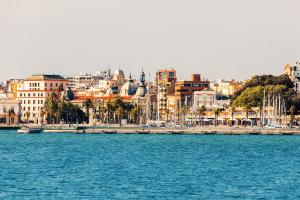
Destination inspiration: Cartagena, Spain
Feast your eyes on this ancient port town, where the past is in plain view.
-

Bucket List / Budget List: Barcelona
Unmissable music, cultural icons and chic hotels. Explore Barcelona, whatever your budget.
-

Destination inspiration: Lloret de Mar, Spain
Let your hair down in the Costa Brava’s most vibrant seaside resort.
-
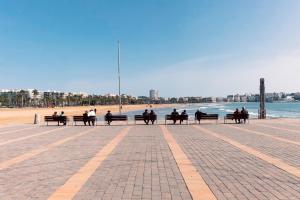
Destination inspiration: Salou, Spain
This resort town on the Catalonian coast promises minimum hassle and maximum relaxation.
-

Head to Spain for a last-minute summer holiday
For spontaneous travellers, nothing beats Spain as a summer holiday destination.
-

A seasonal guide to Malaga
Whichever season you visit Malaga in, expect festivals, museums and world-class beaches.
-

Destination Inspiration: Granada, Spain
Prepare to fall hopelessly in love with Spain's ‘Moorish jewel’.
-

7 of Spain’s top tapas cities
Tapas lovers have spoken – here are some of Spain’s best spots for food.
-
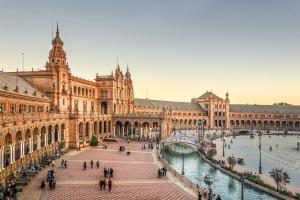
Destination inspiration: Seville, Spain
A city of Moorish architecture, fiery flamenco and Andalusian delicacies.
-

3 arty apartments from Barcelona’s modernist era
Apartments that showcase the style of the revolutionary ‘Catalan modernist’ movement.
-

Where to stay near Barcelona’s Sagrada Familia
The 7 best apartments a short walk from Gaudí’s fantastical but unfinished church.
-

Where to stay near Barceloneta Beach
5 sunny apartments close to Barcelona’s beachfront.
-
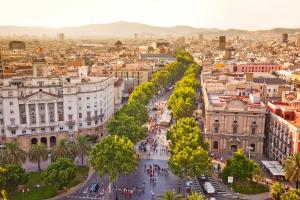
Where to stay near Barcelona’s La Rambla
5 self-catering stays within walking distance of Barcelona’s most vibrant street.
-

Where to stay near Madrid’s Plaza Mayor
4 stylish self-catering apartments around Madrid’s grandest square.
-
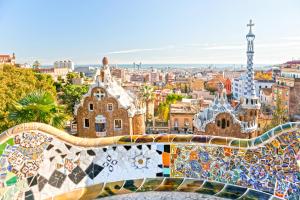
Where to stay near Barcelona's Park Güell
4 of the best apartments in Barcelona’s vibrant Gràcia district.
-

Where to stay near Barcelona's Passeig de Gràcia
5 of the best apartments on Barcelona’s most stylish street.
-

Where to stay near Madrid's Puerta del Sol
5 homely apartments around Madrid’s historic square.
-

Where to stay near Barcelona’s Camp Nou
4 self-catering stays within minutes of the FC Barcelona stadium.
-

Where to stay near Madrid's Gran Vía
4 homely apartments within walking distance of one of Madrid’s busiest streets.
-

Where to stay near Madrid's Royal Palace
6 cosy apartments around Madrid’s most royal residence.
-
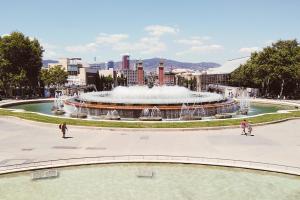
Where to stay near Barcelona’s Magic Fountain
4 Barcelona apartments close to the famous dancing fountain.
-
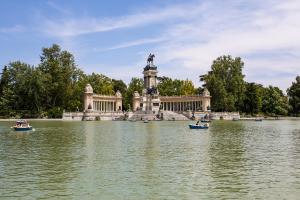
Where to stay near Madrid’s Retiro Park
4 apartments within a short stroll of the park gates.
-

Where to stay near Madrid's Plaza de Cibeles
5 cosy apartments around one of Madrid’s best known squares.
-

Where to stay near Madrid's Puerta de Alcalá
5 apartments within walking distance of the 18th-century granite gate.
-

Where to stay near Madrid’s Estadio Del Bernabeu
4 of the best apartments around Real Madrid’s home turf.
-

Where to stay near Barcelona’s Palau de la Música
5 apartments to explore the capital of Catalan culture.
-

Spain’s 6 prettiest campsites
Pitch a tent on a remote mountainside or barbecue on your bungalow porch with beach views.
-

The best of Spain’s natural beauty
From dreamy waterfalls to surreal mushroom-shaped rocks, Spain is a nature-lover's dream.
-

Where to stay near Madrid’s Golden Triangle of Art
5 apartments in the midst of Madrid’s art district.
-
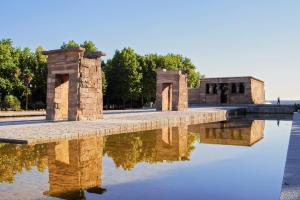
Where to stay near Madrid's Templo de Debod
4 apartments close to this ancient Egyptian monument.
-

A guide to paella in Spain
Bring your appetite, friends, and a big spoon.
-

Spain's best pet-friendly properties
Because your furry friends deserve a sunny getaway too.
-

Spain's best city beaches
Where the Spanish seaside meets cosmopolitan centres.
-
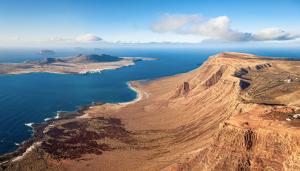
6 of Spain’s hidden islands
Including the island once considered to be the end of the world.
-

5 of Spain's most magical castles
Explore cloud-top fortresses and sprawling hanging gardens.
-

A guide to northern Spain
Journey through Spain's northern territories for a lesser-known but spectacular trip.
-

Spain's 6 most popular hotel bars
At these watering holes, good drinks and design are on the menu.
-

Spain's most romantic destinations
Wander past tumbledown lemon-coloured homes and cross tiny footbridges in walled cities.
-

Where to stay near Barcelona's Fundació Joan Miró
5 accommodations within minutes of Miró’s modern art collection.
-

The modern art guide to Spain
Admire Joan Miró's minimalism in Barcelona and Dali's theatricality in Figueres.
-

7 restful rooftop pools in Spain
Gaze out over Barcelona's spires or look out across golden countryside.
-

Spain's best dog-walking beaches
We’ve found Spain’s most dog-friendly beaches so you can stop searching and start walking.
-

In search of Spain's noteworthy cocktail bars
A country home to palatial art deco hideouts and underground artisanal institutions.
-

7 fantastic family-friendly hotels in Spain
Great locations, friendly staff and excellent facilities; top picks for your family trip.
-

The top 8 hostels in Spain
From happening Barcelona to sunny Málaga, Spain has its fair share of standout hostels.
-

7 Spanish beaches best reached by car
Drive Spain’s glorious coastline to discover secret beaches far away from the crowds.
-

A food lover’s road trip in southern Spain
Try bluefin tuna in Zahara de los Atunes and drink back sherry in Jerez.
-

6 of Spain’s hidden islands
Including the island once considered to be the end of the world.
-
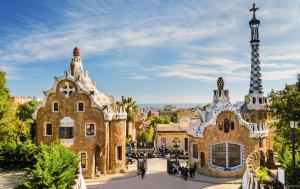
6 destinations for a Spanish sabbatical
Soak up the sun and forget your 9 to 5 in these Spanish long-stays.
-

48 hours in Barcelona, Spain
Featuring beaches, churros and the art of Salvador Dalí.
